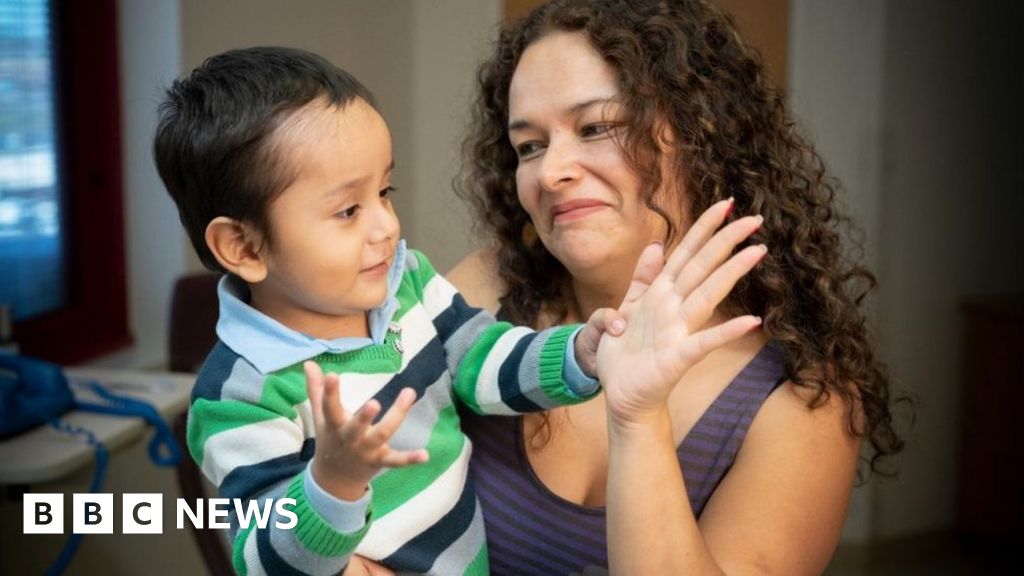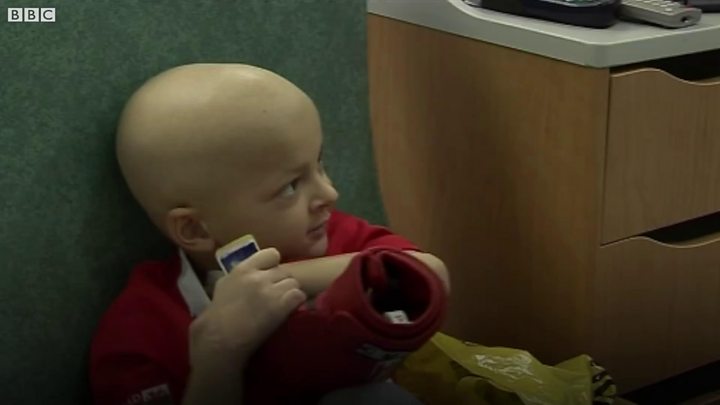
[ad_1]

Copyright of the image
Courtesy of St Jude Children's Research Hospital
Gael, a patient of the St. Jude Children's Research Hospital who was treated, with his mother
US scientists say they have used HIV to develop gene therapy to cure eight infants with severe combined immune deficiency, or "Bubble Boy Syndrome."
The results of the research, developed in a Tennessee hospital, were published in the New England Journal of Medicine.
Babies, born with little or no immune protection, now have a fully functioning immune system.
Untreated babies with this disorder must live in completely sterile conditions and tend to die at a young age.
Gene therapy consisted of collecting babies' bone marrow and correcting the genetic defect of their DNA shortly after birth.
Copyright of the image
SPL
David Vetter, known in the 1970s as the bubble boy
The "correct" gene – used to repair the defect – has been inserted into a modified version of one of the HIV viruses, the virus that causes AIDS.
The researchers said most babies were coming out of the hospital in a month.
Dr. Ewelina Mamcarz of St Jude, author of the study, said in a statement to the hospital: "These patients are now toddlers, they respond to vaccines and have an immune system that allows them to make all the immune cells. they need to protect themselves from the world and live normal lives. "
"This is a first for patients with SCID-X1," she added, referring to the most common type of SCID.
Patients were treated at the St Jude Children's Research Hospital in Memphis and at the UCSF Benioff Children's Hospital in San Francisco.
What is this syndrome?
The case of David Vetter is perhaps the most famous case of severe combined immunodeficiency (SCID), a disease that made it impossible for him to engage in the world in outside a plastic room.
Nicknamed "Bubble Boy", Vetter was born in 1971 with the disease and died at the age of 12 years after a bone marrow transplant.
Copyright of the image
Getty Images
Less than 20 seconds after he was born at the Texas Children's Hospital in Houston, he was placed in a plastic isolation room where he lived until the age of six, when he received a special plastic suit designed by NASA, the US space agency.
His parents had already lost a child to the disease before he was born.
Copyright of the image
Getty Images
What are the other treatment options?
Currently, the best treatment for SCID-XI is a bone marrow transplant with a compatible sibling / donor donor. But according to St Jude, over 80% of these patents lack such donors and must rely on blood stem cells from other donors.
This process is less likely to cure Bubble Boy's disease and is more likely to result in serious side effects due to the treatment.
Previous advances in gene therapy offered alternatives to bone marrow transplantation, but these treatments sometimes involved chemotherapy and had implications for a range of diseases, including blood disorders, sickle cell disease and thalassemia, and the metabolic syndrome.

Multimedia playback is not supported on your device
You may also be interested in:
Gene Therapy deals with 'Bubble Boy & # 39;
[ad_2]
Source link